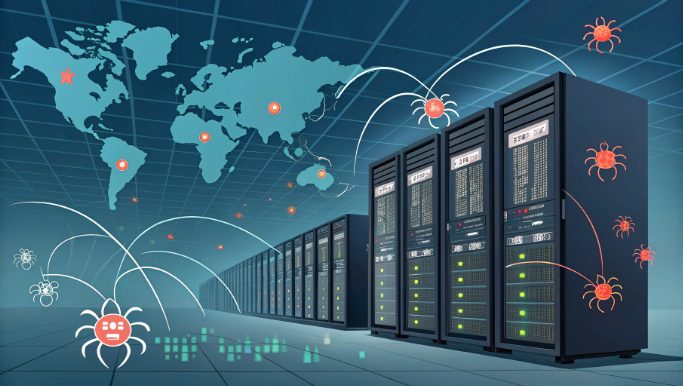Do Web Crawlers Impact Japan Server Bandwidth?

Web crawlers, those tireless digital explorers that navigate through websites, have become increasingly relevant in the context of Japan server bandwidth consumption. For tech professionals managing Japan’s hosting infrastructure, understanding the relationship between crawler activities and server resources isn’t just academic–it’s mission-critical.
Understanding Web Crawler Behavior and Resource Consumption
Let’s dive deep into the technical aspects of how crawlers interact with server resources. When a crawler hits your Japanese server, it initiates multiple HTTP requests, potentially consuming significant computational resources and bandwidth.
- TCP Connection Establishment
- HTTP Request Processing
- Database Query Execution
- Content Delivery
- Connection Termination
Quantifying Crawler Impact on Server Resources
Technical analysis reveals that crawler activity can consume anywhere from 5% to 30% of a server’s total bandwidth, depending on various factors:
- Crawler Type and Behavior Patterns
- Search Engine Bots: Generally well-behaved, following robots.txt
- Data Mining Crawlers: Often aggressive, may ignore rate limits
- Research Crawlers: Variable behavior, depending on configuration
- Server Configuration
- Available Bandwidth Capacity
- CPU Resources
- Memory Allocation
Analyzing Different Crawler Types and Their Impact
In the Japanese hosting environment, we encounter several distinct categories of crawlers, each with unique resource consumption patterns:
- Google’s Googlebot
- Sophisticated crawl rate adjustment
- Moderate bandwidth usage during active crawling
- Respects robots.txt directives
- Baidu Spider
- More aggressive crawling patterns
- Higher bandwidth consumption
- Variable compliance with crawl-delay directives
- Custom Data Mining Bots
- Potentially significant bandwidth consumption
- Often lack rate limiting mechanisms
- May execute parallel requests
Technical Solutions for Crawler Traffic Management
Implementing effective crawler management requires a multi-layered approach, particularly for Japanese hosting environments:
- Rate Limiting Implementation
- Configure Nginx rate limiting:
limit_req_zone $binary_remote_addr zone=one:10m rate=1r/s;
limit_req zone=one burst=5 nodelay;
- Apache mod_ratelimit setup for bandwidth control
- Application-level request throttling
- Configure Nginx rate limiting:
- Intelligent Crawler Detection
- User-Agent analysis
- Behavioral pattern recognition
- IP reputation checking
Optimizing Server Configuration for Crawler Management
Japanese hosting providers should consider these technical optimizations:
- Cache Configuration
- Implement Redis or Memcached for frequently crawled content
- Configure browser caching headers appropriately
- Utilize CDN services strategically
- Resource Allocation
- Dedicate specific CPU cores for crawler traffic
- Implement memory limits per connection
- Configure I/O priorities
Advanced Traffic Control Strategies
For optimal management of crawler traffic on Japanese servers, consider implementing these advanced strategies:
- Dynamic Rate Limiting
- Adjust limits based on server load
- Implement progressive penalties for aggressive crawlers
- Use machine learning for pattern detection
- Resource Monitoring Tools
- Prometheus for metrics collection
- Grafana for visualization
- Custom alerting systems
Cost-Benefit Analysis of Crawler Management
When evaluating crawler management solutions for Japanese hosting environments, consider these factors:
- Infrastructure Costs
- Bandwidth consumption rates
- CPU utilization costs
- Storage requirements
- Performance Metrics
- Response time impact
- Server availability
- Resource utilization efficiency
Future-Proofing Your Crawler Management Strategy
The evolution of web crawlers necessitates an adaptable approach to traffic management:
- Emerging Technologies
- AI-powered traffic analysis
- Automated response systems
- Predictive resource allocation
- Scalability Considerations
- Elastic resource allocation
- Multi-region traffic distribution
- Load balancing optimization
Conclusion
The impact of web crawlers on Japanese server bandwidth is significant but manageable with the right technical approach. Through proper implementation of traffic control measures, monitoring systems, and resource optimization, hosting providers can maintain optimal performance while accommodating legitimate crawler traffic. The key lies in striking a balance between accessibility for search engine crawlers and protection against resource-intensive automated access.
For Japan hosting environments, the future of crawler management points toward more intelligent, automated solutions that can adapt to evolving crawler behaviors while maintaining efficient resource utilization and server performance.

